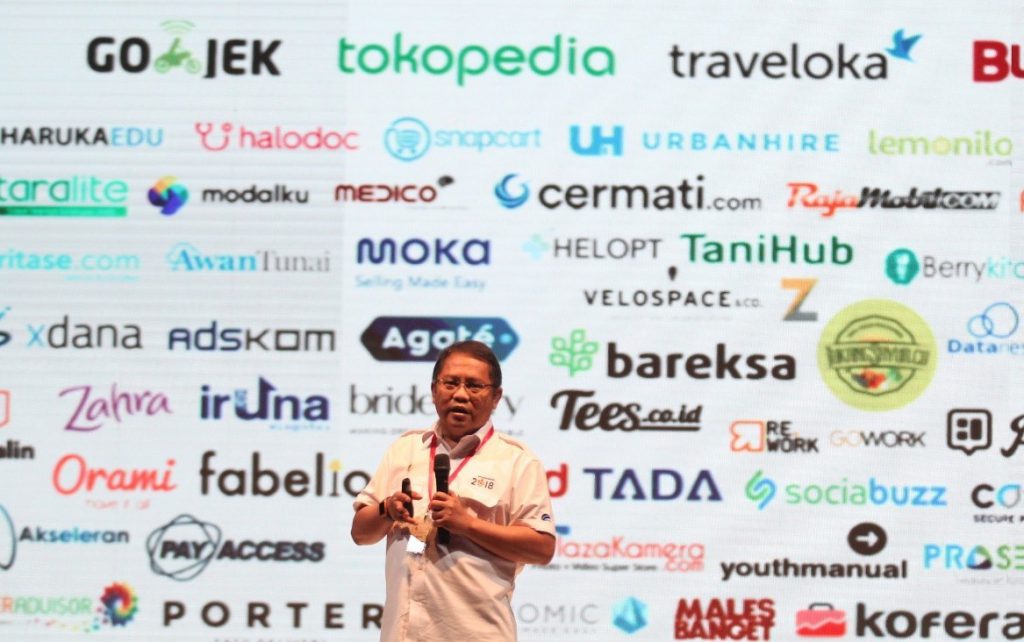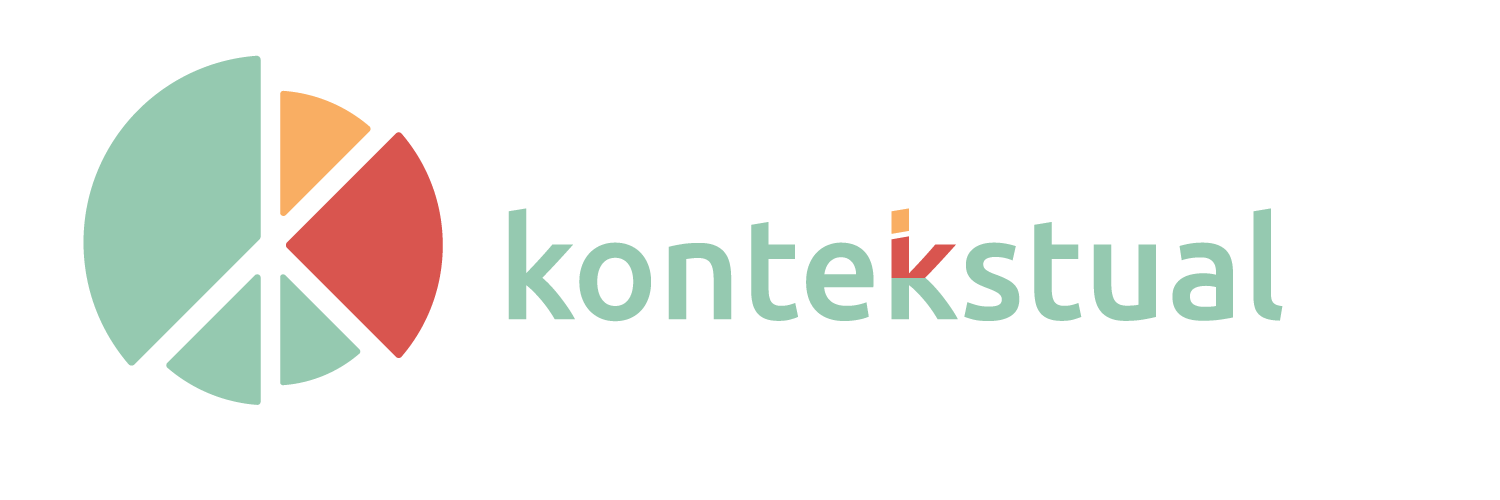How Indonesia Harnessed its Digital Economy during COVID-19

Illustration of digital technology companies in Indonesia. Photo: Zul Trio Anggono/Jakarta Post
Like every other country in the world, Indonesia been no stranger to the effects of the COVID-19 pandemic. Around 5.1 million people have lost their jobs in the country, which is rough 2.4 percent of the working age population. Whilst an additional 24 million Indonesians have had their work hours reduced significantly due to the pandemic. As havoc was wreaked on Indonesia’s greater economy, the archipelago’s digital economy has begun to flourish in the most testing of circumstances.
Businesses of all sizes have adopted digital technologies to maintain operations, school closures have forced teachers and students to adopt digital remote learning methods and Healthtech apps have allowed consultations and medicine delivery to continue. It is a well-known fact that Indonesians are obsessed with entertainment and constant socialisation. Threatened by the pandemic, Indonesia’s have migrated to the internet to fulfill these needs, adding to the rapid growth in digital media usage and communications apps.
Leading up to the pandemic Indonesia had maintained steady economic growth rates, settling around 5 percent between 2015 and 2019, backed by robust domestic consumption and major investment reformation efforts. Indonesia faced the pandemic with a government debt to GDP ratio of 30.3 percent, one of lowest rates out of all ASEAN countries. Indonesia’s digital economy was already in a firm position, labelled the fastest growing ICT market in Southeast Asia, quadrupling in size between 2015 and 2019 at a rate of 49 percent per year, according to a Bain and Company report.
When comparing the ICT sector to others within Indonesia during the pandemic, the results are outstanding. In the 3rd quarter of 2020, the ICT sector grew by 10.88 percent, whereas the transport and warehousing sector declined by 30.88 percent and the hotels and restaurants sector also declined by 22.22 percent. Although the growth has been helped dramatically by consumers being forced to use online methods of shopping, as offline non-essential shopping has come to a standstill. Not all firms have found the transition to the digital world easy, as a survey from DRI found that 1 out of 3 micro, small and medium enterprises (MSMEs) found difficulty when marketing on digital platforms. Inequalities also remain within the access and knowledge of digital marketing mainly being concentrated within Java, as 29.18 percent of MSMEs in Java have converted, whilst only 16.16 percent of MSMEs outside of Java have converted.
The leaps and bounds that the digital economy experienced during the pandemic is partly due to the digitalisation and infrastructure development that was undergone in Indonesia’s pre-pandemic diversification efforts. These developments have given rise to a high number of tech unicorns in Indonesia, as the country now hosts the most tech unicorns out of all ASEAN countries and accounts for one-fifth of ASEAN’s internet economy. These companies include OVO, Bukalapak, Traveloka and now GoTo, the product of a merger between Gojek and Tokopedia worth $18bn.
Another development that has been greatly facilitated by the pandemic has been the growth in financial technology (fintech). With the accelerated demand in digital financing that COVID-19 brought about, Indonesia’s fintech industry has grown to incorporate 364 different players as of April 2020. The rise in fintech has been instrumental in supporting the growth of the digital economy, particularly for depositing, lending and payment services in a time where face-to-face banking has ceased. As a result, a study by RedSeer found that 65 percent of surveyed Indonesians reported an increase in the use of digital payments since the inception of COVID-19.
Now that Indonesia has secured a broad range of digital tools, the digital ecosystem presents itself with incredible investment potential. The robust fintech segment is at the heart of this and is expected to grow further with institutional support from Bank Indonesia and the financial services authority. This includes Bank Indonesia supporting cashless social aid programmes and the provision of digitalised payment system infrastructure specifically for MSMEs. Not only does this provide tremendous opportunities for local MSMEs, but also gives the chance for agile apps, that specialise in a range of different services within fintech, e-commerce and the delivery value chain, to establish themselves in a new and exciting industry.
E-commerce, another facet of the digital economy has also been experiencing similar gains during these unprecedented times. McKinsey reported that over half of Indonesian consumers tried a new digital shopping method during the first half of 2020, which led to a compound annual growth rate (CAGR) of 54 percent in the gross merchandise value of Indonesia’s e-commerce purchases. An outstanding example of the resilience and initiative displayed by Indonesian businesses who made the transition to e-commerce is that of Depo Bangunan (Depo). The Indonesian building materials company made the switch to a digital sales platform and saw its online sales rise from 0 to 7 percent in the first month of the pandemic, operating entirely through WhatsApp and online bank transfers. Depo is now able to leverage its digitalisation and continue its operations.
This incredible growth that the digital economy is experiencing is certainly not temporary, it is well placed to remain a key growth driver post pandemic and will continue to play a key role in every Indonesian’s life. The fintech industry is poised for future expansion and more importantly, the tools that it possesses such as digital payments, food delivery, and e-commerce, could broaden financial inclusion and create jobs for Indonesians. If the digital economy’s growth can be maintained, Indonesia will slip into the 4th industrial revolution with ease. The CAGR of the digital economy is forecasted to rise to 23 percent over 2020-25, with a valuation of $124bn. This would mean that 48 percent of ASEAN-5’s digital economy is situated in Indonesia by 2025, becoming over twice as valuable as the second largest economy in the group, Thailand. Further research by AlphaBeta has found that Indonesia’s digitally skilled workforce has the potential to add $300bn by 2030 to Indonesia’s GDP.
It is with no doubt that Indonesia’s digital economy has provided essential support to not only the archipelago’s wider economy, but also to Indonesian people, who have been able to continue their livelihood in such testing times. The growth that Indonesia is experiencing is uneven and mainly situated on the island of Java. However, the potential for this growth to receive greater investment and spread across the archipelago is unequivocal.
Kieran Shine is a student at the University of Western Australia and a Research Assistant at INDEF. She can be found on LinkedIn with the profile link https://www.linkedin.com/in/kieran-shine-461504205





